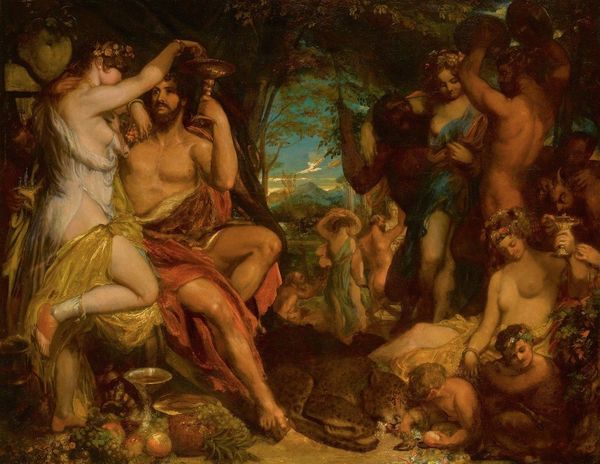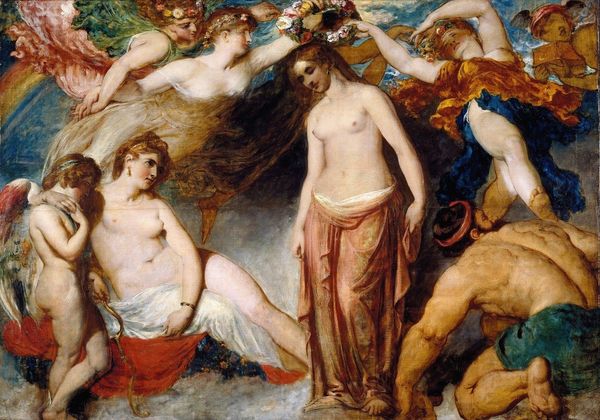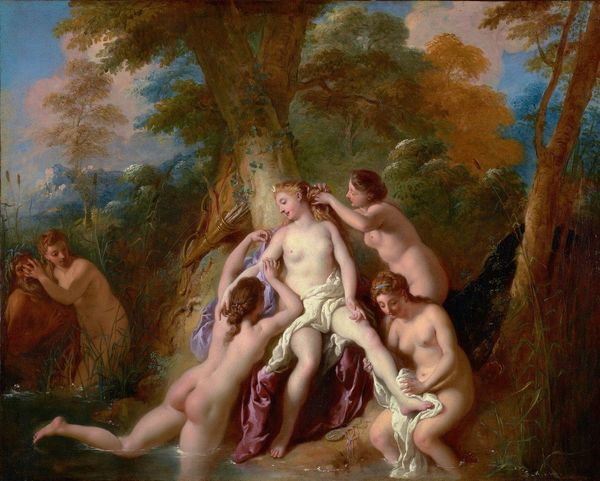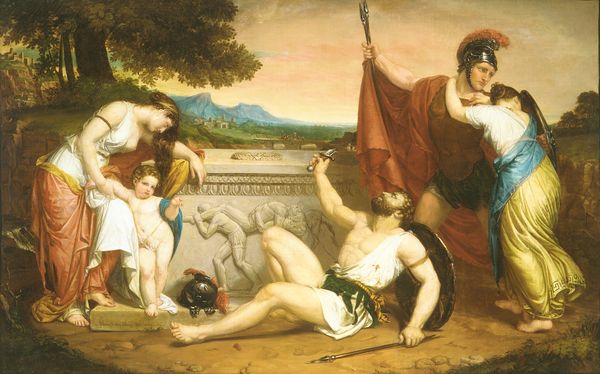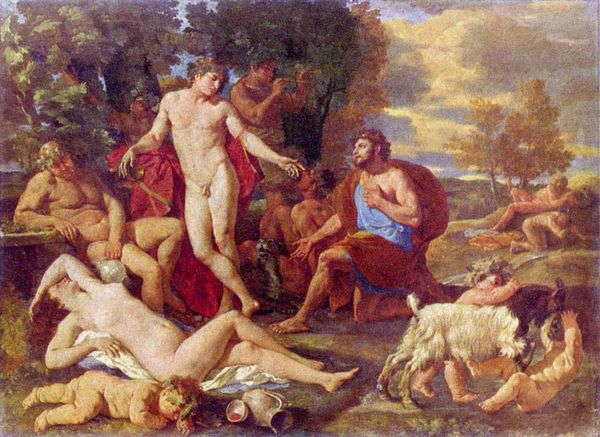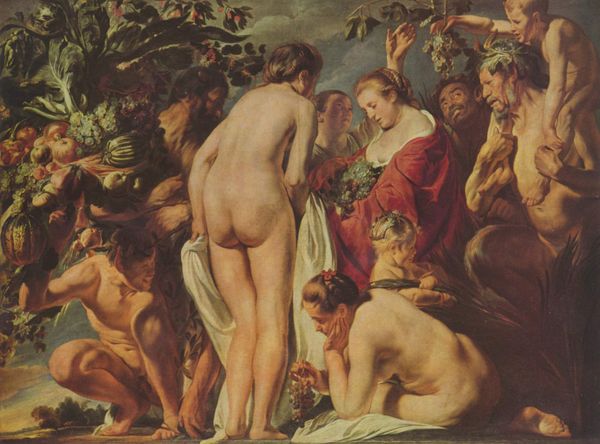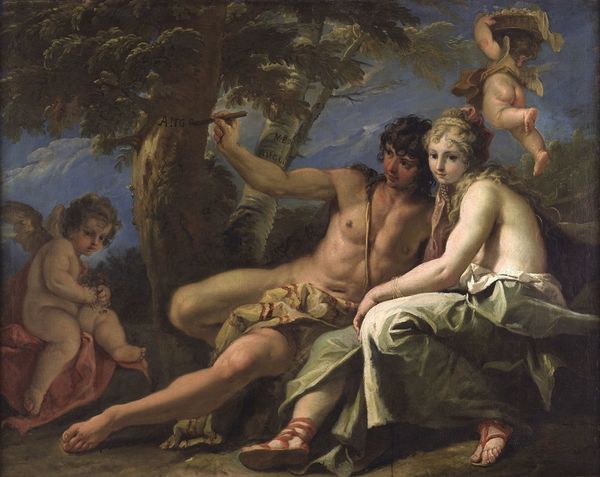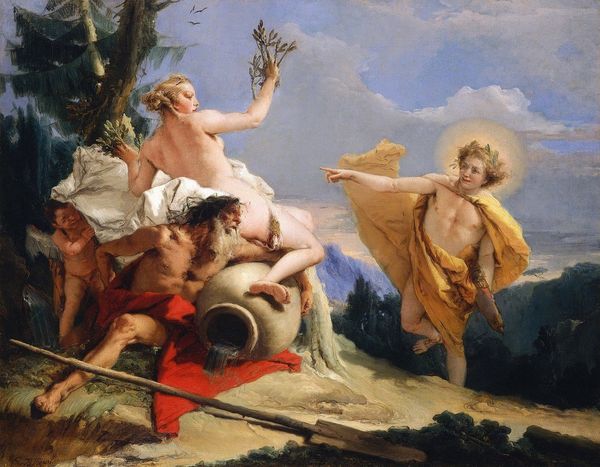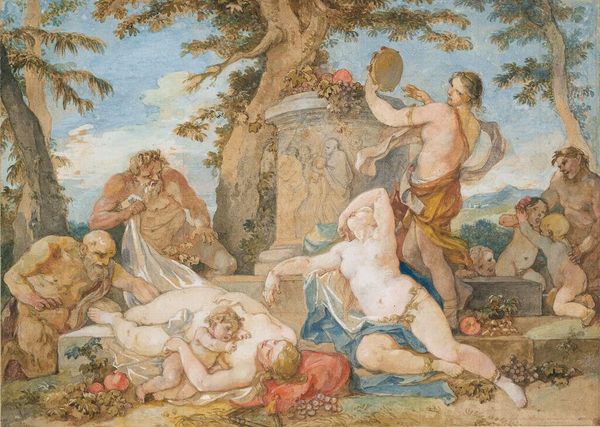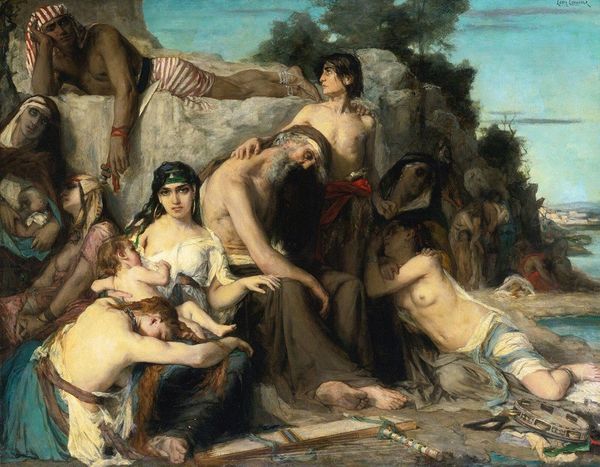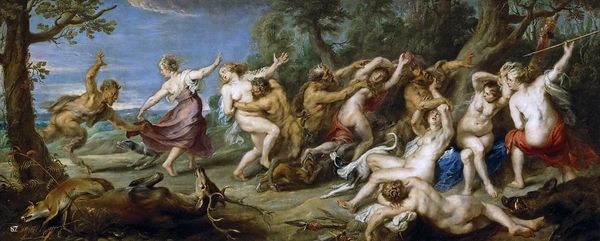
The tribe of Benjamin seizing the daughters of Shiloh in the vineyards
0:00
0:00
painting, oil-paint
#
gouache
#
painting
#
oil-paint
#
figuration
#
oil painting
#
romanticism
#
genre-painting
#
history-painting
#
watercolor
Copyright: Public Domain: Artvee
Editor: So, this painting is entitled *The tribe of Benjamin seizing the daughters of Shiloh in the vineyards* by John Everett Millais. It’s an oil painting, though the date isn’t listed. The image depicts… well, chaos. What do you make of a scene like this being depicted? Curator: What strikes me immediately is the lens through which we view such scenes. Millais, a prominent figure in the Pre-Raphaelite Brotherhood, often grappled with representing historical and biblical narratives within the socio-political constraints of his time. This specific scene… It begs the question: how do we, as a modern audience, reconcile this romanticized depiction of what appears to be a mass abduction? Consider how such historical paintings were displayed – often in grand halls, intended to instruct as much as to entertain. What moral framework was being implicitly endorsed, or perhaps, critically examined? Editor: It seems contradictory, right? This painting is very dramatic. Do you think audiences would question it? Curator: Perhaps, though consider the role of the institution displaying the work. The placement and curation choices actively shaped how an audience would engage with such contentious subject matter. Museums can unintentionally validate certain historical perspectives while marginalizing others. I wonder what discussions about social justice would take place around this image. The fact that Millais, celebrated at the time, presented it makes it worthy of academic observation today. Editor: So much to unpack with one image! Thank you. I hadn’t considered how the venue would also contribute to how a painting is perceived. Curator: Absolutely. Considering that artwork can reveal social values of the period during its creation allows for better understanding and appreciation of its impact in its time.
Comments
No comments
Be the first to comment and join the conversation on the ultimate creative platform.
